The Korea Times: Croatia – ‘Miss World’ of the Mediterranean
http://www.croatia.org/crown/articles/9988/1/The-Korea-Times-Croatia-8211-8216Miss-World8217-of-the-Mediterranean.html
By Prof.Dr. Darko Zubrinic
Published on 07/16/2010
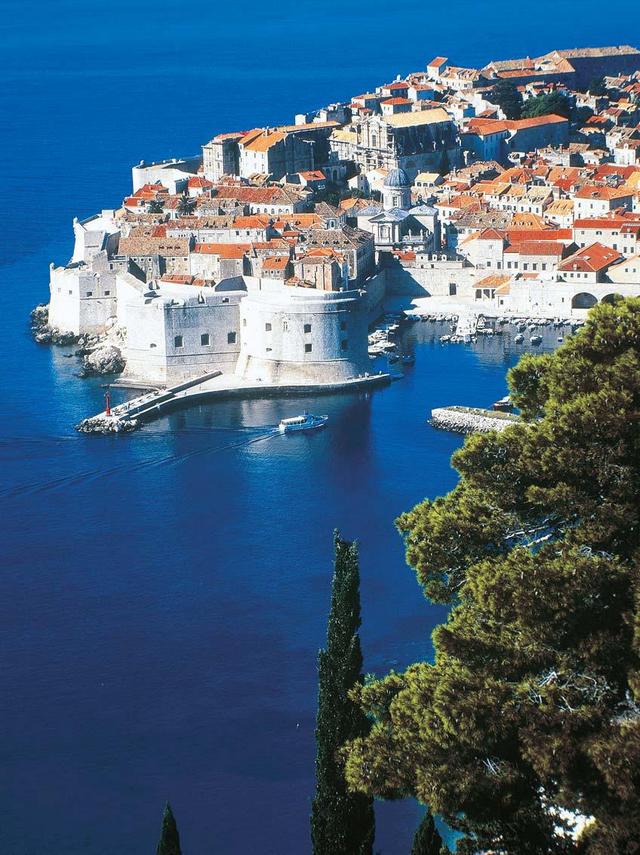
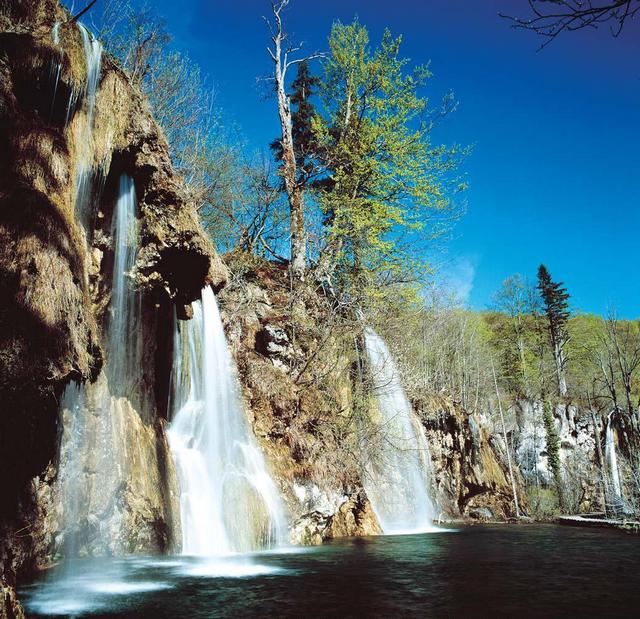
 | Mr. Lee Chang-sup, The Korea Times correspondent, wrote a very nice article about Croatia. Writing about Plitvice Lakes, Mr. Lee expressed his opinion that Croatians may feel their pride hurt when this national park is compared with the Niagara Falls in the U.S. and the Iguazu Falls near the border of Brazil and Argentina, at least in natural beauty. |
Paradise in the Mediterranean

| Dubrovnik - jewel of the Adriatic Sea Dubrovnik is regarded as the most beautiful city in Croatia. It is located on the southern tip of the Balkan country. It boasts of monuments and museums under UNESCO patronage. Starting from the 1,940 meter-long walls with bulwarks, the Stradun, Orlando’s pillar, the Gothic renaissance palace of Sponza and the celebrated Rector’s Palace as well as the famous church and monastery, Dubrovnik has, without a doubt, a special place in Croatia’s cultural heritage. Within one hour from Dubronvnik, the stone town of Ston has the 5.5-kilometer-long stone walls, the world’s second longest after China’s Great Wall. Growing up on the remains of a Greek colony, the island of Korula with streets that have a fish bone pattern is a true urban gem and is most famous today for being the birthplace of adventurer Marco Polo. In the furthest south, there is the island of Mljet with a Benedictine monastery built in the 12th century that was constructed on an island in the middle of a great |
| Croatia - ‘Miss World’ of the Mediterranean  The Korea Times The Korea TimesFRIDAY, MAY 21, 2010 By Lee Chang-sup Korea Times correspondent Croatia is a popular tourist destination because it is less commercialized and less overcrowded. Everything is well preserved. Croatians are lovely, innocent and trusting people who are kind to tourists. ZAGREB - Many South Koreans have a sketchy and negative image of Croatia. The older generation has the perception that she is part of the former Communist country under the authoritarian leadership of Tito. His bloody ties with North Korean leader Kim Il-sung in the 1960s and ’70s projected the impression that the country maintained a repressive regime just as North Korea does. Tito borrowed foreign funds heavily for the well-being of the people. South Korea’s Park Chung-hee borrowed foreign money heavily to build factories. Croatians are living on tourism and South Koreans are thriving on manufacturing. The older South Korean generation has a distorted memory of the former Yugoslavian state. The bloody war between Croatia and Serbia (1991-1992) killed 20,000 citizens. The southern Slavic nations were divided into six independent republics. There is no nostalgia for the communist era, excluding a few hundred seniors who were political members back then. Croatians are aware of the suffering that this era has brought to them. Negative consequences of the period are still lingering in certain areas like agriculture. Private land was limited. Now Croatians are reestablishing themselves again through agriculture and manufacturing, though with much difficulty. Freedom of speech and religion were suppressed, often by force. Now it is truly a democratic state with guaranteed civil rights. Croatian Minister of Justice Simonovic became an assistant to U.N. Secretary General Ban Kimoon. Despite wars, the country is not dangerous. Croatia is one of the safest nations in the EU and tourists can walk freely during the day and night without danger. There is absolutely no tension on the borders and all people from the former Yugoslavia can freely travel to and from Croatia. In crossing the borders of the former republics, including Serbia and Bosnia, there are no armed soldiers. There are only checkpoints for either an ID card or a passport. Border points are not heavily militarized like the DMZ in Korea. The Mediterranean country is rich in cultural heritage from the Roman Empire and Middle Ages, has authentic customs, dances, songs and cuisine. Six natural parks dot the coast stretching for 6,000 kilometers. Croatia is preparing for accession to the EU and became a full NATO member as of last year. The country has a tradition and reputation in shipbuilding, pharmaceutical and food industries. The first Croatian electric car won the first prize in Geneva. Life was harsh for Croatians due to foreign invasions and about four million Croatians left their motherland during the two world wars. Those living inland suffered the most. It is curious that four million Croatians are living outside Croatia whereas 4.5 million are living within its borders. It is not easy to forget the tragedy of the recent civil wars, involving Croatia and Serbia and Bosnia. They have not forgotten the wars but they do not show animosity toward each other. Upon arrival in Croatia, this writer found how perceptions and reality are so strikingly different. Croatia can justifiably claim to be called a paradise in the Mediterranean. Yugoslavia means the southern Slavic country, consisting of six republics, Croatia, Serbia, Slovenia, Macedonia, Montenegro and Bosnia-Herzegovina. When you explain family ties in South Korea, you say blood is thicker than water. The same phrase in Croatia is blood is not water. There are three heritages - natural, man-made and living. Living heritage is another valuable asset the Mediterranean country possesses. Through interaction with Croatians, tourists can share their innocence and level-headedness. They are entrepreneurs of life who think beyond the existence for a better life. They seldom sacrifice today for the future. When Europe meets the Mediterranean Croatia is a microcosm of Italian, Hungarian, Turkish, Austrian and Roman legacies and influences due to centuries of domination and occupation by neighboring countries. Through your visit, you can appreciate the culture, architecture of these countries which had dominated Croatia from prehistoric times until 60 years ago. It combines the best of the two worlds - the European and the Mediterranean. The west coast of Croatia is more serene and peaceful with more sand and pebble beaches. The sea in Split and Dubrovnik is beautiful and the air is rich with the aroma of salt and pine. Croatia is the destination of repeat visitors to the EU. It is a popular tourist destination because it is less commercialized and less overcrowded. Everything is well preserved. Croatians are lovely, innocent and trusting people who are kind to tourists. Few young people indulge in narcotics. Croatian cuisine is also an attraction. History and geography has had a great impact on its food. Its sea food is similar to Italian. Asian food is also available in the southern part of Croatia because of the Turkish influence. Croatia’s ethnic background is also interesting. They are intrinsically Slovak people but you can see Hungarian, Italian, German, Czech and Ukrainian minorities. The cost of living is not expensive by European standards. Croatians know they should be kind to foreigners because tourism is their bread and butter. About 20 percent of national income comes from tourism. Communication in English is possible on the streets. It is one of the safest places in the world because you can walk the back alleys of the country at night without fear of attack or pickpockets. Log on to www.htz.hr to plan your trip to Croatia. From luxury -seeking tourists to backpackers, all information is available. Zagreb, the capital of Croatia and its southern tip island Dubrovnik can be reached within two hours from Frankfurt, Naples, Vienna and Budapest. Korea and Croatia have yet to sign an aviation accord for direct flight services between the countries. Source The Korea Times |

Plitvice Lakes
Many thanks to Mr. Lee Chang-sup for his kind permission to reproduce his article from The Korea Times for the readers of the CROWN.
Also many thanks to Mr. Vjeko Martinko of Lovranske Vile who made our contact with Mr. Lee possible.
| Plitvice Lakes Croatians may feel their pride hurt when this national park is compared with the Niagara Falls in the U.S. and the Iguazu Falls near the border of Brazil and Argentina, at least in natural beauty. The national park is Croatia’s largest protected area and one of the most popular tourist attractions. The park embraces the kind of landscape unique enough to stick in a visitor’s memory for a lifetime. At its heart is a string of turquoise lakes, each fed by a sequence of terraced waterfalls. These cascades were created over several millennia by a waterborne limestone sediment known as travertine, picked up by mountain rivers and deposited downstream to form a sequence of natural dams. The process is still ongoing, and silvery-gray travertine can be seen coating the pebbles and plant stalks of Plitvice’s lakes. The rush and thunder of the rapids contrasts markedly with the untroubled calm of the larger lakes, although the silence is frequently broken by the sound of croaking frogs. Above the lakes, there are forests thick with fir and beech, an ideal habitat for deer, wolves, lynx and brown bears. |
| Key facts about Croatia
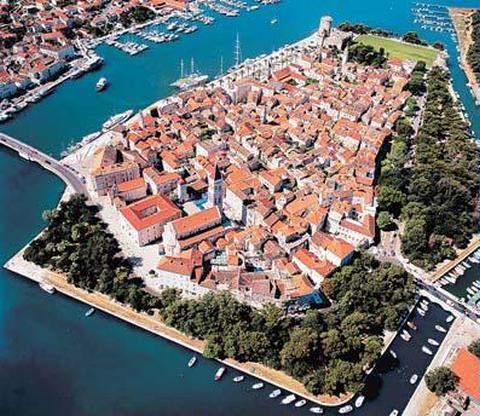 The city of Trogir, protected by UNESCO, situated on the small islet, just 30km from the city of Split. Zagreb, the capital of Croatia, is a central European city which is located a mere two-hour journey by plane or an hour or two longer by road from other European capitals. The city is known for its traditions of nostalgic artistic journeys through the past and present. It boasts many museums, parks and galleries. Diocletian’s Palace in the city of Split, protected by UNESCO, was built 1,700 years ago. The historical core of the town of Trogir, another UNESCO site, is located within 30 kilometers of the palace. 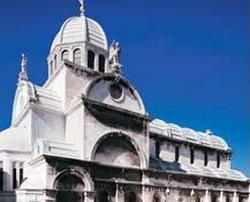 The Šibenik Cathedral The Šibenik area abounds with numerous cultural monuments ranging from prehistoric times till now. You can see Gothic and Renaissancestyle stone buildings. 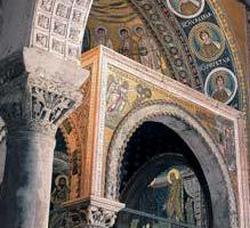 Euphrasius Basilica in Poreč The basilica is located in Poreč. It is included on the UNESCO World Heritage. Named after Bishop Euphrasius, it was built in the sixth century. It is a splendid example of early Byzantine art. Source The Korea Times |
Many thanks to Mr. Lee Chang-sup for his kind permission to reproduce his article from The Korea Times for the readers of the CROWN.
Also many thanks to Mr. Vjeko Martinko of Lovranske Vile who made our contact with Mr. Lee possible.
Formated for CROWN by prof.dr. Darko Žubrinić
Distributed by www.Croatia.org . This message is intended for Croatian Associations/Institutions and their Friends in Croatia and in the World. The opinions/articles expressed on this list do not reflect personal opinions of the moderator. If the reader of this message is not the intended recipient, please delete or destroy all copies of this communication and please, let us know!